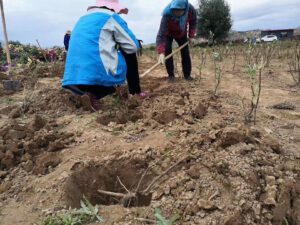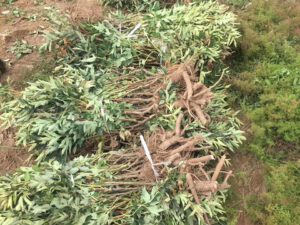Spring is the season of peony branch, with the temperature rising, peony root system began to activity, germination of new roots, at the same time flower buds began to form. This process requires a lot of nutrients and water to keep the buds large and the roots elongated and thickened as the leaves unfold into buds and branches.

Summer is the dormant period of peony, high temperature season, the above-ground part into the stage of flower bud differentiation and seed development, when the root activity becomes weak, in a semi-dormant state.

After autumn, as the temperature drops, the root system of tree peony begins to grow a second time, it will grow a lot of capillaries, a lot of nutrients in the root bark (mainly secondary phloem) in the accumulation. At this time, the above-ground part of the branches and leaves slowly withered into the dormant period, but the peony root system is still growing to produce new roots. These new fine roots is the most important tree peony transplant, transplant to other places, can adapt to the new environment, quickly take root, so safe over the winter.

What are the benefits of transplanting peony in autumn?
The temperature drops gradually when peony transplanting in autumn, the above-ground branch enters dormancy period, the leaf slowly withers this to the water demand is little, consume nutrient little, this is advantageous to the nutrient balance. Moreover, at this time, the root bark was rich in nutrients, and the ground temperature was relatively high even though the outside temperature had not yet dropped significantly.

The roots of the tree peony were not yet completely dormant, and the root system cut off during transplantation could be healed as soon as possible, and the root system is still growing, constantly producing new roots.
